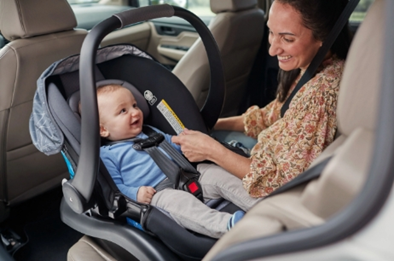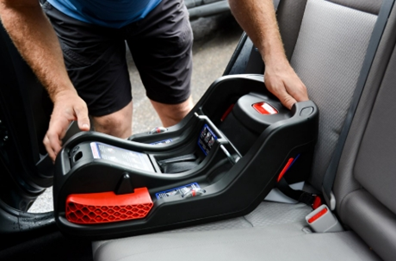Huawei
Time: globisoftware
On: Feb/17/2025
Category: Huawei iphone samsung Digital life
Installing an infant car seat might seem daunting, but it is a crucial task for your child’s safety. Proper installation ensures your baby is secure every time you hit the road. Knowing how to install an infant car seat correctly can help you avoid costly mistakes and ensure that your child is as safe as possible. In this guide, we’ll walk you through each step of installing an infant car seat, from preparing your car to conducting final checks for security. Whether you’re a first-time parent or need a refresher, these tips will help you feel confident in setting up your car seat correctly. Keeping your baby safe and comfortable during travel starts with getting the installation right.

Why Proper Installation of an Infant Car Seat Is Crucial
Correct installation of an infant car seat is essential for your child’s safety during travel. Statistics show that improperly installed seats are a leading cause of injury in car accidents involving infants. When installed correctly, these seats promote optimal protection by absorbing the impact force and protecting your child’s head, neck, and spine. Furthermore, well-installed car seats help prevent your baby from moving around too much, which can lead to discomfort and unsafe positioning. Ensuring your infant car seat is properly installed provides peace of mind and significantly reduces the risk of injury in the event of a collision.
Preparing the Car for Infant Car Seat Installation
Choosing the Right Seat for Your Baby
Selecting an appropriate car seat for your infant is the first step towards safe travel. Ensure the seat is designed for your baby’s current weight and height. Always check the labeling for guidelines and refer to the manufacturer’s recommendations. It’s also important to consider features like an adjustable harness, ease of installation, and compatibility with your vehicle. Convertible seats are a versatile option that can grow with your child, but infant-only seats are typically more tailored for newborn safety. A proper fit not only maximizes protection but also ensures your baby’s comfort during journeys.
Checking Your Car’s Compatibility with the Infant Car Seat
Before installing your infant car seat, verify your car’s model compatibility. Most modern vehicles are equipped with LATCH (Lower Anchors and Tethers for Children) systems, which are designed to make installation easier and more secure. Check your car’s manual to locate these anchors. Additionally, it’s crucial to determine whether the car seat fits well within the designated space in your vehicle. Some infant car seats might be incompatible with certain car models due to size or seat angle constraints. Making sure your car and car seat work well together will streamline the installation process and enhance safety.
Step-by-Step Guide to Installing an Infant Car Seat
Step 1: Positioning the Base Correctly
Start by placing the car seat base on the rear seat of your car. The base should lie flat against the seat and not tilt. Use the recline adjuster on the base to ensure it is at the appropriate angle, often indicated by a line or bubble level. This correct positioning is vital because it maintains the baby’s airway and helps prevent suffocation. Make sure to follow the instructions provided by the seat manufacturer to adjust the recline settings accurately. Ensuring the base is properly leveled is the foundation of a secure installation.
Step 2: Attaching the Car Seat Using the LATCH System
Once the base is positioned correctly, locate the lower anchors in your vehicle’s seat and attach the LATCH connectors. If your vehicle doesn’t have a LATCH system, you can use the seat belt to secure the base. Thread the seat belt through the belt path as indicated by the manufacturer and buckle it, pressing down on the base to remove slack. If using the LATCH system, make sure that both connectors are securely clipped to the anchors. Apply firm pressure on the base and tighten the straps or belt. The goal is to minimize any movement of the base.

Step 3: Ensuring the Car Seat Is Secured Properly
After attaching the base, double-check its stability by giving it a firm shake at the belt path. It should not move more than an inch from side to side or front to back. A properly secured base is paramount for the safety and security of your child. Next, attach the infant carrier to the base, making sure it clicks into place securely. This connection should be both firm and easy to detach when needed. Double-check all fastening points to ensure everything is locked in, providing maximum protection for your baby during the ride.
Common Mistakes to Avoid When Installing an Infant Car Seat
When installing an infant car seat, some common mistakes include assuming that seat belts alone are always sufficient without proper tightening, neglecting to check the recline angle, and not securing the car seat base tightly enough. Another frequent mistake is placing the car seat in the front seat, which can be dangerous due to airbags. Always place the car seat in the rear, ideally in the middle, to offer the greatest protection. Also, not reading the manual or instructions properly can lead to improper use of the straps and anchors. Avoid these errors to ensure a correct installation.
How to Test if the Infant Car Seat Is Installed Correctly
To ensure the infant car seat is installed correctly, perform a few critical tests. First, shake the seat at the belt path; it should not move more than one inch from side to side or front to back. Check the recline angle; some car seats have a built-in level indicator for this purpose. Push down on the base and visually inspect all buckle and tether points to confirm they are securely fastened. You can also have your installation checked by a certified child passenger safety technician. This added step can offer peace of mind and guarantee that the seat is set up correctly.
Conclusion
Installing an infant car seat correctly is an essential step in ensuring your baby’s safety while traveling. Knowing how to install an infant car seat properly reduces the risk of injury in the event of a crash. By following these guidelines and taking the time to secure the car seat properly, you can protect your child from potential harm. Remember to choose the right seat, check for compatibility, and follow all steps meticulously. Avoid common mistakes and verify your installation through simple tests or professional inspection. A well-installed car seat provides both safety and comfort for your baby, allowing you to travel with peace of mind knowing your child is protected.
FAQ
Can I install an infant car seat without the base?
Yes, you can install an infant car seat without the base. To do this, thread the vehicle’s seat belt through the designated belt paths on the car seat. Make sure the seat belt is tightly secured, and the seat does not move excessively.
How do I know if the car seat is installed tightly enough?
Check if the car seat moves more than an inch side to side or front to back. If it does, tighten the installation. The car seat should feel securely anchored and should not wobble when you shake it with moderate force.
What should I do if my infant car seat is not fitting properly?
If the car seat does not fit properly, consult both the car seat and vehicle manuals. You may need an additional seat cushion or padding. If issues persist, seek assistance from a certified child passenger safety technician to ensure a correct fit.
